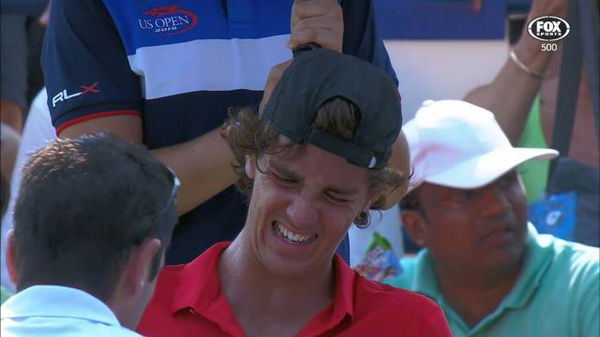
via Imago
kokkinakis us open 2015

via Imago
kokkinakis us open 2015
Rarely does one come across the first week of a Grand Slam, when the talking points are not upsets but the exasperating weather conditions. And by exasperating, we mean the hot, humid and sultry conditions at the Flushing Meadows that has deprived fans of results in the most exciting first round matches.

ADVERTISEMENT
Article continues below this ad
Even with the timely massages by on-court physios and massage therapists to respond to players’ injuries on-the-spot, the number of mid-match retirements have been the highest ever in a Major event.
Jack Sock’s retirement against Bemelmans, Kokkinakis’ premature exit against Gasquet, Monfils’ shocking fall and Istomin’s injury are some of the record 14 injuries that have plagued the first week so far.
Less than two hours after his match ended, Sock was spotted in the players’ facility. Red-faced and sipping a cup of ice water, Sock limped around in small circles in the atrium leading to the players’ garden.

The aspiring 20 year old German Zverev lost out to the heat wave eventually against Kohlschreiber, in the 5th set which undoubtedly was the best an unseeded player performed so far. The fantastic ground strokes and immaculate serving clearly displayed the skill that the youngster possessed, but the extreme weather got the better of him eventually, to deny him a much deserved 2nd round entry.

Big serving Croatian Ivo Karlovic was the most recent a shocking exit as he crashed out in Round 2. He lost to the Czech Veseley in a slug-fest in an epic 5-setter to steal the win in a tie breaker in the final set.

“They have to be careful about things like heat stroke, dehydration at a rapid pace, and, obviously, protecting yourself from the sun,” said Gladstone. “Even if you apply [sunscreen], if you’re involved in a five-setter that takes you three-and-a-half or over four hours, at some point you’re going to sweat it all off.”
“That means not just making sure you take enough lessons to have the right stroke, but you want to have a strong core, you want to have strong legs, you want to build up stamina, your cardiovascular reserve — all that goes into playing well,” he said. “It’s not just being able to hit the ball well.”
This year, the U.S. Tennis Association has set up meteorological equipment around the stadium and also is working with a Canadian wind-testing company “to measure conditions, seeking to ensure they will remain similar when the roof is open or closed” which promise that the big matches will not be drastically influenced by the weather.
With the business end of the tournament coming up, the heat wave might result in more retirements, and the organizers must re-think their strategy to ensure that players are able to put on a good show for the fans, and provide a fair playing field for seeded as well as unseeded players.
ADVERTISEMENT
Article continues below this ad
Comment Courtesy: CBS News
ADVERTISEMENT
Article continues below this ad
ADVERTISEMENT
ADVERTISEMENT
ADVERTISEMENT
ADVERTISEMENT


